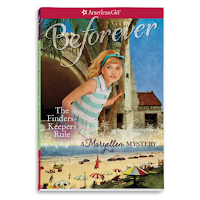The past few months, I have been wanting my children to know the gospel; not just know it, but to feel it. Yet every time I have sat down to teach my children, my pre-teen enters his defensive "don't preach at me" mode, someone else has the sillies, and anyone else is playing "can't touch me" with his neighbor.
Approaching Easter, I found In the Garden. One of the first things I noticed about it was that it was illustrated by Brandon Dorman, the same man who illustrated the beloved covers of the boys' Fablehaven and Candy Shop War books. Would an connection to some favorite novels spark some interest?
I decided it was worth a try, and ordered a copy through Deseret Book (we live hours away from the nearest church-themed bookstore). It took about a week to arrive at our address in the Eastern United States via the cheapest shipping method available. Since I ordered several weeks before Easter, that was fine. And, it was in perfect condition (unlike the board book I ordered at the same time, but that's another review).
I introduced this Easter book in advance, hoping they would get excited. I told them about the illustrator, and the fact that I actually bought a book for retelling the Easter story. They seemed mildly interested.
A week before Easter, I read this book to my children, ages 8-12. They listened fairly quietly (which is a huge success in itself). When I got to the author's wording of what Jesus took on himself during his prayer in Gethsemane, there was an audible, "Whoa," from one of my oldest boys. Reading this book to my children was the most spiritual experience we have had as a family since . . . I don't know when. Maybe ever?
I read this for a second time on Easter Sunday, and while the effect wasn't quite as pronounced (there was some whispering and extraneous movements) my often defensive child enjoyed showing off his knowledge of what happened, by adding to what the book has on the crucifixion.
I plan to keep this book special and look forward to it as an Easter tradition to continue over the next few years.
In the Garden is different from many other tellings of the Easter story, because the emphasis is on what happened in the Garden of Gethsemane. It was written for an LDS audience.
Broken into page-spreads (two facing pages), the story flows as follows:
- 1 page-spread on the Last Supper
- 1 page-spread approaching the garden
- 5 page-spreads on what happened in Gethsemane, including his prayers, the sleeping disciples, and the angel who "came to strengthen him"
- 2 page-spreads on the mock-trials
- 1 page-spread on the crucifixion (a mild scene with silhouettes of crosses)
- 1 page-spread on placing him in the tomb
- 1 page-spread on the resurrection
- 1 page-spread of Jesus visiting with children
- the end-page quotes John 3:16


















